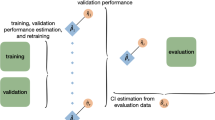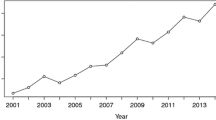
Overview
- An expert-driven practical book based on real-life assessment examples of performance and classification models
- Rich with C++ code examples and analysis of data
- Contains all you need to know to analyze your C++ prediction and classification algorithms
Access this book
Tax calculation will be finalised at checkout
Other ways to access
About this book
Considerable attention is given to information theory, especially as it relates to discovering and exploiting relationships between variables employed by your models. This presentation of an often confusing subject avoids advanced mathematics, focusing instead on concepts easily understood by those with modest background in mathematics.
All algorithms include an intuitive explanation of operation, essential equations, references to more rigorous theory, and commented C++ source code. Manyof these techniques are recent developments, still not in widespread use. Others are standard algorithms given a fresh look. In every case, the emphasis is on practical applicability, with all code written in such a way that it can easily be included in any program.
What You'll Learn
- Compute entropy to detect problematic predictors
- Improve numeric predictions using constrained and unconstrained combinations, variance-weighted interpolation, and kernel-regression smoothing
- Carry out classification decisions using Borda counts, MinMax and MaxMin rules, union and intersection rules, logistic regression, selection by local accuracy, maximization of the fuzzy integral, and pairwise coupling
- Harness information-theoretic techniques to rapidly screen large numbers of candidate predictors, identifying those that are especially promising
- Use Monte-Carlo permutation methods to assessthe role of good luck in performance results
- Compute confidence and tolerance intervals for predictions, as well as confidence levels for classification decisions
Who This Book is For
Anyone who creates prediction or classification models will find a wealth of useful algorithms in this book. Although all code examples are written in C++, the algorithms are described in sufficient detail that they can easily be programmed in any language.
Similar content being viewed by others
Keywords
Table of contents (9 chapters)
-
Front Matter
-
Back Matter
Authors and Affiliations
About the author
Bibliographic Information
Book Title: Assessing and Improving Prediction and Classification
Book Subtitle: Theory and Algorithms in C++
Authors: Timothy Masters
DOI: https://doi.org/10.1007/978-1-4842-3336-8
Publisher: Apress Berkeley, CA
eBook Packages: Professional and Applied Computing, Apress Access Books, Professional and Applied Computing (R0)
Copyright Information: Timothy Masters 2018
Softcover ISBN: 978-1-4842-3335-1Published: 20 December 2017
eBook ISBN: 978-1-4842-3336-8Published: 19 December 2017
Edition Number: 1
Number of Pages: XX, 517
Number of Illustrations: 18 b/w illustrations, 8 illustrations in colour
Topics: Big Data, Artificial Intelligence, Probability and Statistics in Computer Science, Statistics, general



